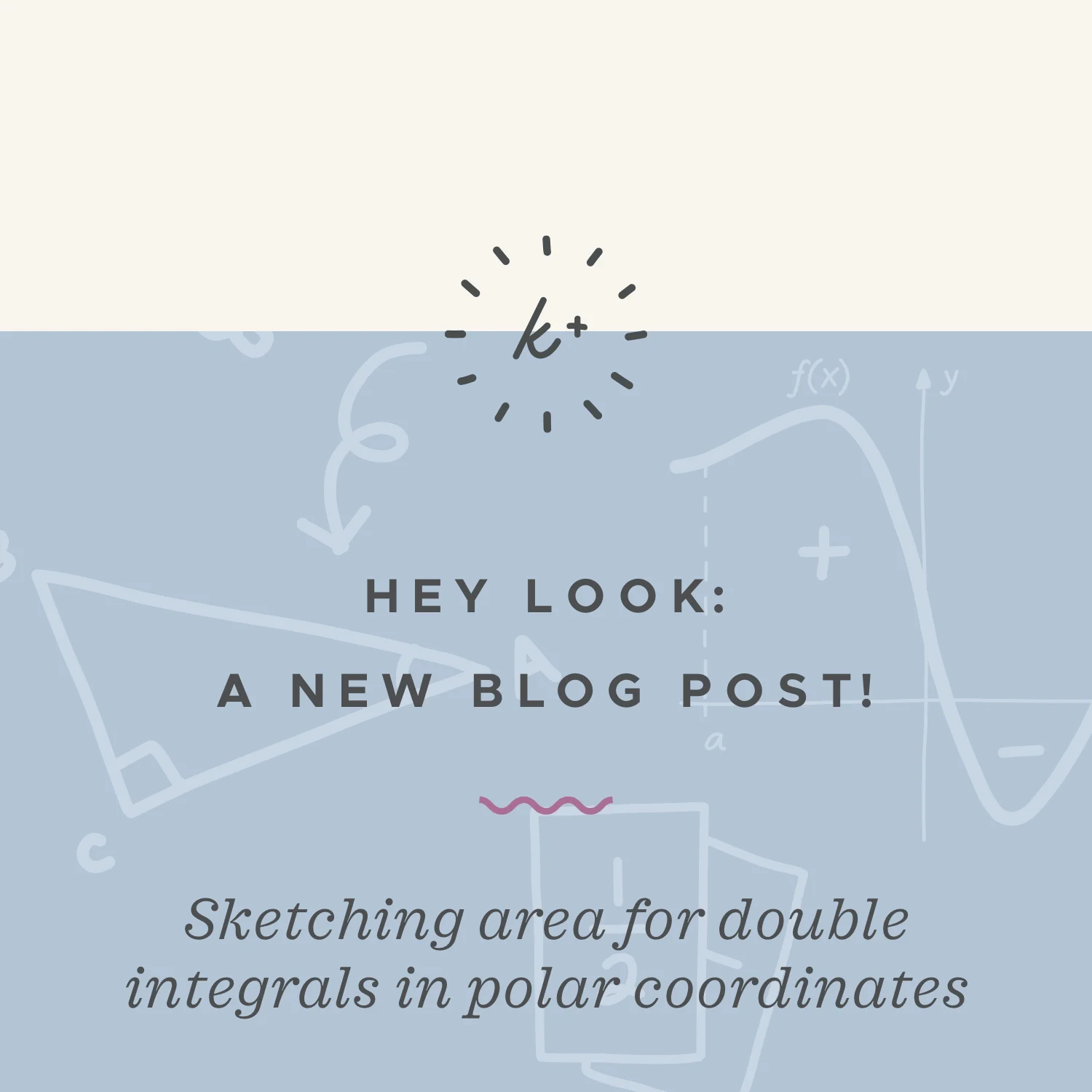We can estimate the average value of a region of level curves by using the formula (1/A(R)) int int_R f(x,y) Delta(A), where A(R) is the area of the rectangle defined by R=[x1,x2]x[y1,y2], and where the double integral gives the volume under the surface f(x,y) over the region R.
Read MoreTo change an iterated integral to polar coordinates we’ll need to convert the function itself, the limits of integration, and the differential. To change the function and limits of integration from rectangular coordinates to polar coordinates, we’ll use the conversion formulas x=rcos(theta), y=rsin(theta), and r^2=x^2+y^2. Remember also that when you convert dA or dy dx to polar coordinates, it converts as dA=dy dx=r dr dtheta.
Read MoreTo sketch the area of integration of a double polar integral, you’ll need to analyze the function and evaluate both sets of limits separately. Remember, you’ll need to sketch the polar function on polar coordinate axes, where the r values represent the radius of a circle and the theta values will produce straight lines.
Read MoreYou can use a double integral to find the area inside a polar curve. Assuming the function itself and the limits of integration are already in polar form, you’ll be able to evaluate the iterated integral directly. Otherwise, if either the function and/or the limits of integration are in rectangular form, you’ll need to convert to polar before you evaluate.
Read MoreIf we’re given a double integral in rectangular coordinates and asked to evaluate it as a double polar integral, we’ll need to convert the function and the limits of integration from rectangular coordinates (x,y) to polar coordinates (r,theta), and then evaluate the integral. We can do this using the formulas to convert between rectangular and polar coordinates.
Read MoreWe already know that we can use double integrals to find the volume below a function over some region given by R=[a,b]x[c,d]. We use the double integral formula V=int int_D f(x,y) dA to find volume, where D represents the region over which we’re integrating, and f(x,y) is the curve below which we want to find volume.
Read MoreIn the past, we used midpoint rule to estimate the area under a single variable function. We’d draw rectangles under the curve so that the midpoint at the top of each rectangle touched the graph of the function. Then we’d add the area of each rectangle together to find an approximation of the area under the curve. When we translate this into three-dimensional space, it means that we use three-dimensional rectangular prisms, instead of two-dimensional rectangles, to approximate the volume under a multivariable function.
Read MoreGiven a region defined in uvw-space, we can use a Jacobian transformation to redefine it in xyz-space, or vice versa. We’ll use a 3x3 determinant formula to calculate the Jacobian.
Read MoreYou can use a double integral to find the area of a surface, bounded by another surface. The most difficult part of this will be finding the bounds of each of the integrals in the double integral.
Read MoreWhenever we’re given a double integral, we want to turn it into an iterated integral, because with iterated integrals, we can easily evaluate one integral at a time, like we would in single variable calculus. When we evaluate iterated integrals, we always work from the inside out.
Read More











